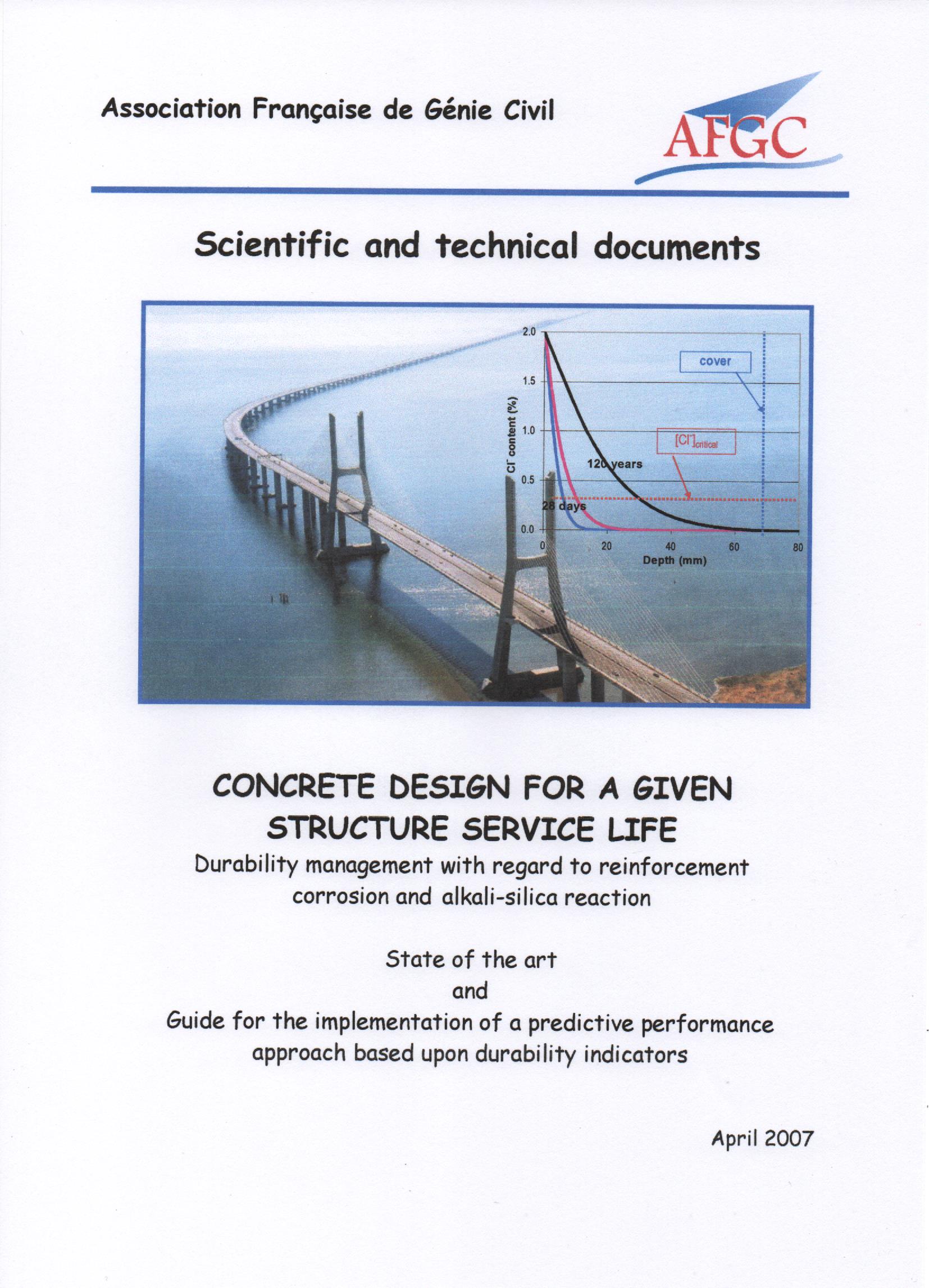
Concrete Design for a given structure service life – Durability management with regard to reinforcement corrosion and alkali-silica reaction
Janvier 2007
This document aims at achieving a better knowledge of the durability properties of (reinforced) concrete and its constituents, and establishing means for managing this durability. It describes state-of-the-art practice and proposes a methodology for the application of a global, predictive performance-based approach to the durability of (reinforced) concrete structures, based...
This document aims at achieving a better knowledge of the durability properties of (reinforced) concrete and its constituents, and establishing means for managing this durability. It describes state-of-the-art practice and proposes a methodology for the application of a global, predictive performance-based approach to the durability of (reinforced) concrete structures, based on the concept of durability indicators and combining laboratory measurements and calculation codes (models). Two types of deterioration are considered, reinforcement corrosion (induced by carbonation or chloride ingress) and alkali-silica reaction.
This document covers the following aspects in particular:
• A description of the chemical, physical and mechanical mechanisms, and their combinations where applicable, causing reinforcement corrosion, and the damage caused by alkali-silica reaction. This stage also enables identification of durability indicators, i.e. the fundamental factors influencing these mechanisms, in a given environment.
• An overview of the available test (and calculation) methods for quantifying durability indicators.
• A method for assessing « potential » durability based on classes.
• Durability indicator specifications according to the type of environment and the required service life.
• A description of service life prediction models relating to the processes liable to cause reinforcement corrosion or alkali-silica reaction, for which the input data include the selected durability indicators and the outputs are the monitoring parameters. Methods are also proposed for measuring the monitoring parameters, applicable to test specimens in the laboratory or to samples taken from structures.
• A method for durability prediction in the design stage or for assessment of the residual durability of existing structures.
Theoretical supplements, in particular concerning the mechanisms involved, and examples of methods and models for (experimental or numerical) validation of the classes and specifications, and for partial application of the methodology and specifications of engineering structure projects, are contained in the appendices attached to the text of this guide.
Date de publication
Janvier 2007
Nombre de page
Langue
Anglais